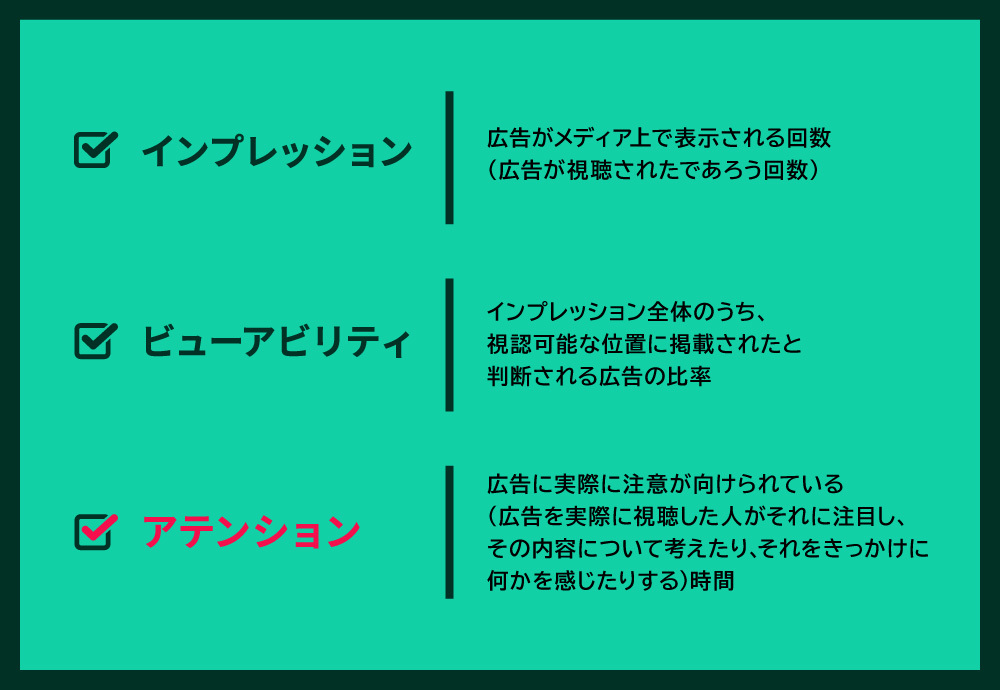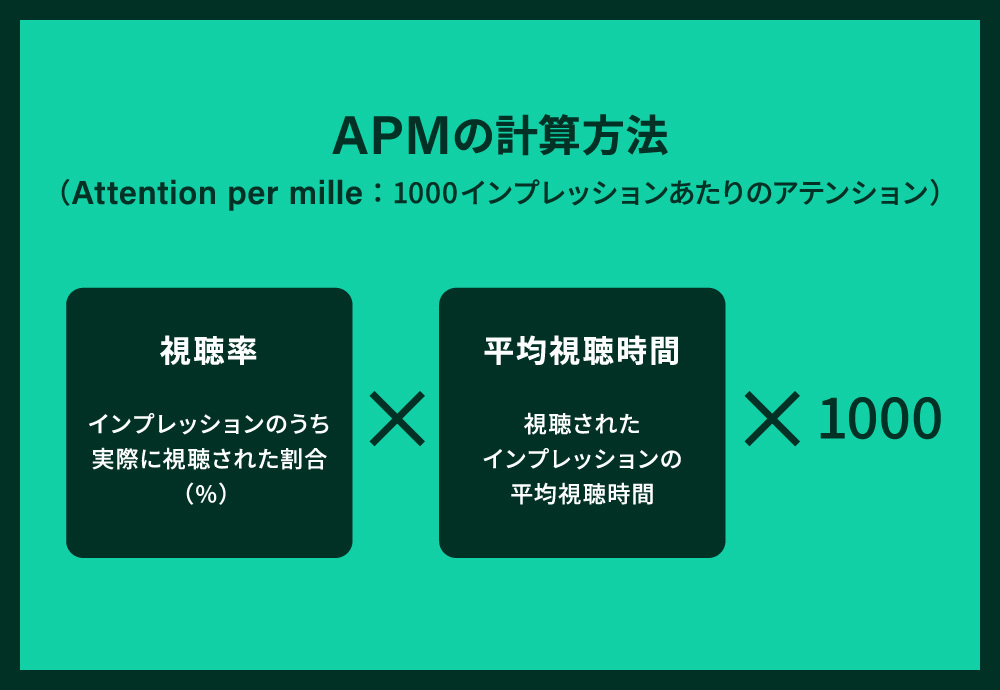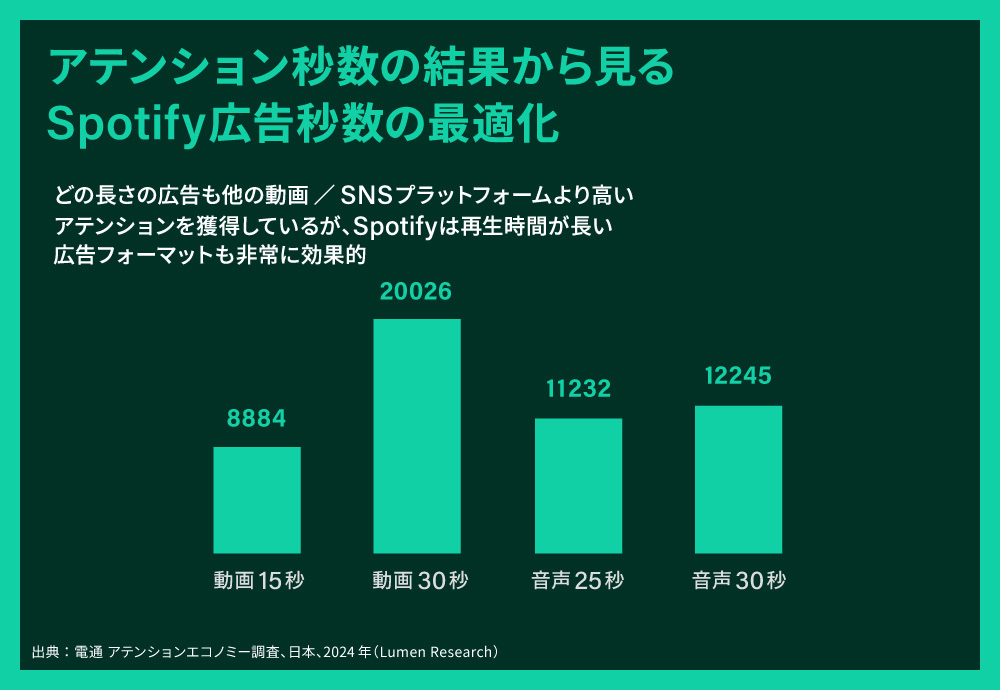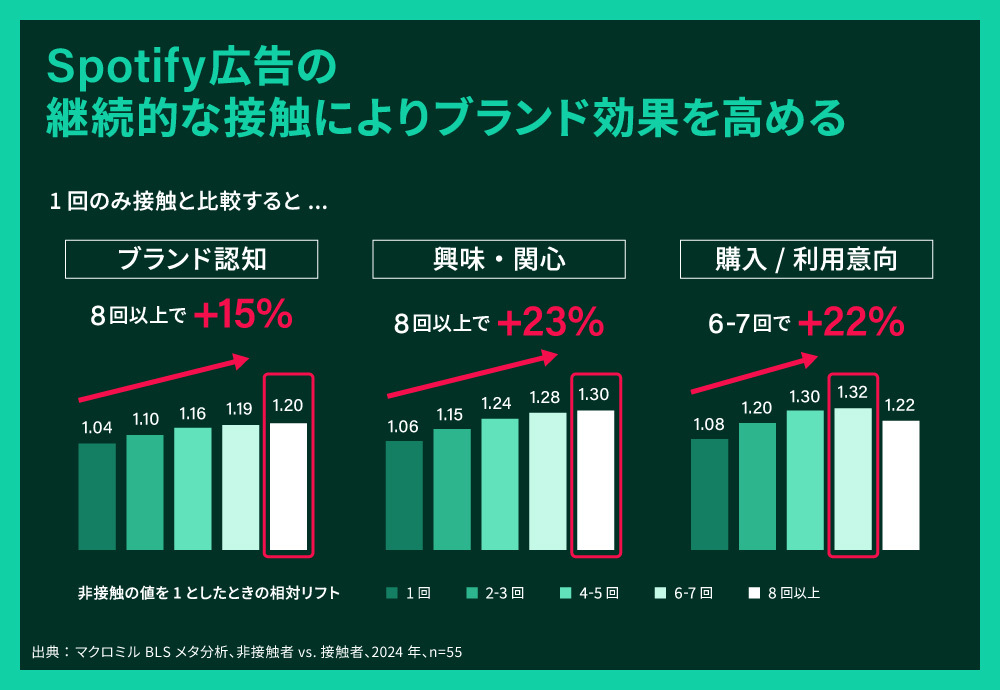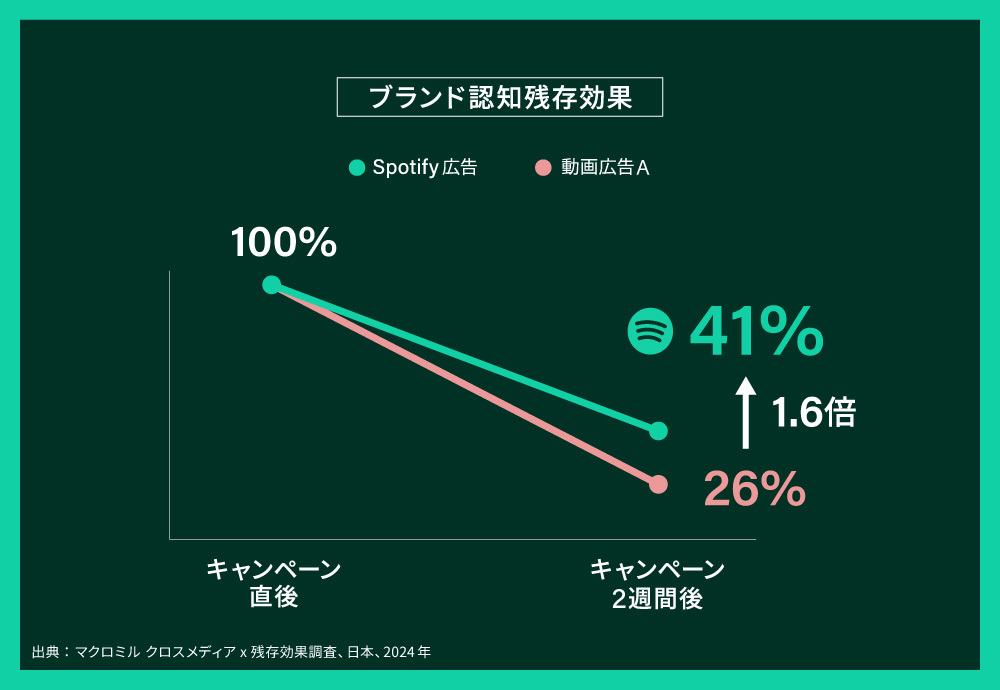In an era where building genuine engagement with consumers through advertising is challenging, the industry is focusing on a new advertising metric: "Attention" (whether attention was directed toward the ad).
This article introduces the potential of Spotify advertising, as indicated by attention, supported by evidence, based on the joint research report "The Impact of Music Streaming Advertising on Brands" (released April 1, 2025) by Spotify Japan and Dentsu Japan International Brands Inc. (※1).
Why is Attention Gaining Attention?
In recent years, content consumption habits have changed dramatically. On smartphones, short videos stream continuously, easily swiped away to skip to the next one. It's also becoming common to watch videos on TV devices while simultaneously scrolling through social media on a smartphone. The digital environment is diverse, making it increasingly difficult for clients placing ads within it to capture consumers' genuine interest and build real engagement.
Impressions have long been a primary metric for measuring ad effectiveness in Japan. However, this metric does not assess whether users actually saw the ad. Viewability is another metric, representing a step forward from impressions, but it still cannot evaluate whether users actually focused their attention on the ad. Consequently, advertisers are beginning to incorporate "attention-based metrics" alongside the two aforementioned advertising metrics.
Attention is measured using algorithms developed based on large-scale eye-tracking and behavioral observation studies conducted worldwide. The key difference from the two metrics mentioned earlier is that it "captures the degree of focus on the ad itself." It can accurately evaluate whether the ad was actually seen by the user and how long it held their attention.
Attention-based metrics measure not only whether an ad was "seen," but also whether it truly captured the viewer's attention. By incorporating attention-based metrics into ad effectiveness measurement, marketers can evaluate campaign results in a comprehensive and meaningful way, enabling them to develop more effective media strategies.
The primary attention metric is Attention per Mille (APM), calculated as follows:
APM evaluates how much attention was captured per 1,000 impressions. Furthermore, by measuring APM for each advertising medium, the "quality" of ad impressions across different media can be compared.
Historically, media planning has often been based on the assumption that all impressions hold equal value across any media or ad. However, this assumption fails to account for the fact that the cost and effectiveness per ad vary significantly depending on the medium—such as television, social media feed ads, or pre-roll ads.
Since 2019, dentsu, including its international group, has published the "Attention Economy" research report in collaboration with leading media companies across its U.S., UK, and Australian offices. The Attention Economy study is the industry's first global research dedicated exclusively to attention and represents one of the world's largest initiatives in terms of scale and scope.
This research aims to establish a new standard for evaluating not just "ads displayed," but "actual delivered advertising value." It utilizes eye-tracking and AI technology to visualize and quantify attention to ads based on users' gaze and viewing behavior.
Furthermore, in recent years, in Japan, we have begun research using APM in collaboration with partner companies such as Spotify, Lumen Research (hereinafter referred to as Lumen) (※2), and Realeyes (※3). This research has revealed that advertisements that garner high attention also contribute to brand recall (※4).
The graph below shows brand recall rates for each ad creative based on attention levels in the Attention Economy study. It shows that brand recall rates increase as average viewing time lengthens. Higher attention (longer average ad viewing time) has been confirmed to enhance brand recall rates (an indicator representing the percentage of brand or product names consumers first recall within a specific category). Conversely, viewability shows little correlation with improving brand recall rates.
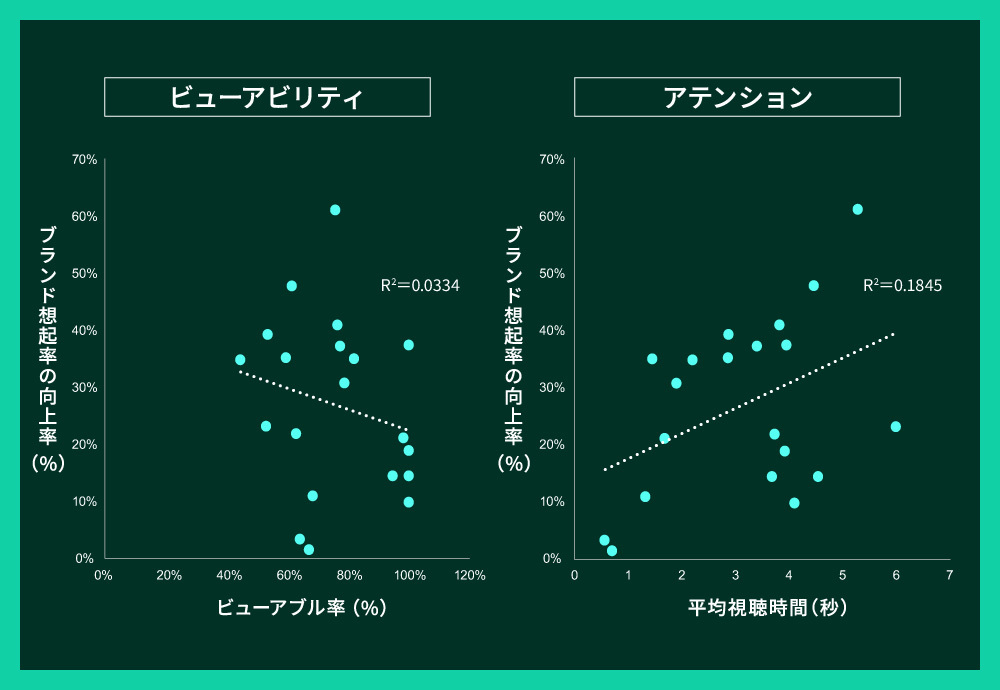
Each data point represents a test ad: sample size (20), excluding outliers and live streaming
Dentsu Japan International Brands Inc. has seen increasing inquiries about attention research, and in Japan too, more clients are introducing attention as an advertising effectiveness metric. Among the global clients the company serves, there was an initiative in 2024 to set attention as one of the media KPIs and measure and evaluate it across media. Furthermore, beyond visualizing attention effects, optimization efforts are accelerating, such as strengthening delivery to media and placements with high attention performance.
Spotify Ads Excel in Sustained Attention
The Attention Economy study used Lumen's latest eye-tracking technology to examine attention for digital format ads across various platforms. Spotify video ads were one of the formats studied.
However, audio ads cannot be measured with this technology. Therefore, dentsu, which has ongoing research with Lumen, leveraged an algorithm capable of estimating the Attention Performance Metric (APM) for audio ads with high precision through an exclusive partnership with the company. This algorithm
・Ad exposure time
• Brand recall
• Enhanced brand selection
• Forced and voluntary attention
The survey results revealed that while attention for many ad formats drops by about half within 2-3 seconds after the ad appears, Spotify ads tend to maintain attention until the end.
Research findings revealed that while attention to most ad formats drops by about half within 2-3 seconds after display, Spotify ads tend to maintain attention throughout their duration.
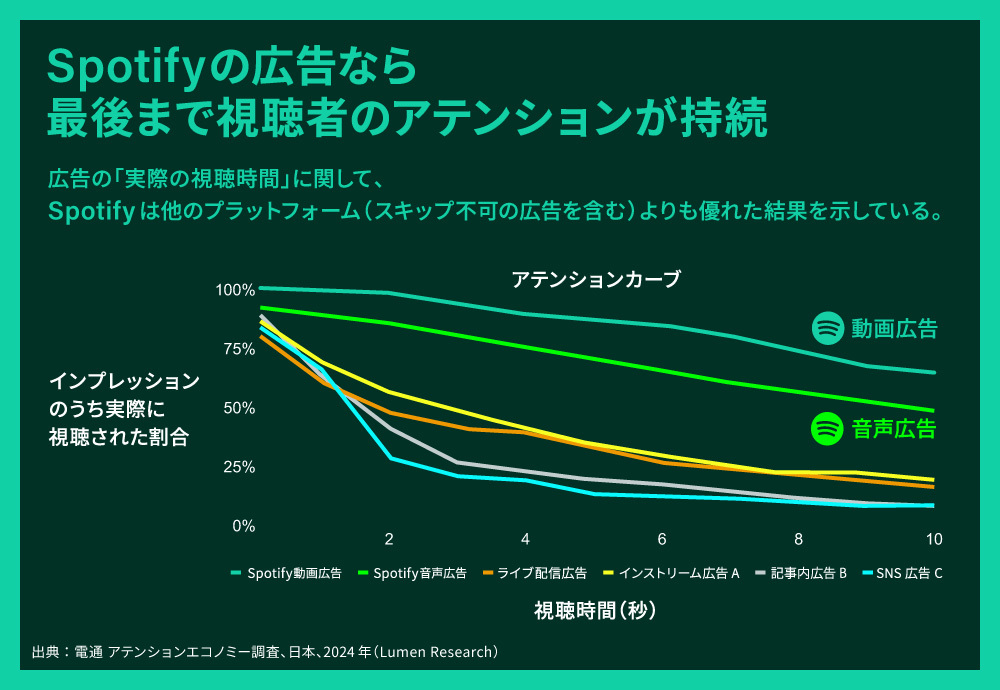
*The study compared each platform's ad formats individually. The above graph shows a selection of these.
*Alphabets were randomly assigned to each graph to distinguish formats like "In-Stream Ads" that exist across multiple platforms. Since letters were assigned per graph, the formats shown in graphs within the article may not be identical.
*The design minimized the impact of creative assets, such as using the same brand creative across multiple formats.
When examining the same data using APM metrics, Spotify's video ads garnered approximately 3 times more attention than the "In-Stream Ad A" format and about 5 times more than the "SNS Ad B" format. Audio ads also demonstrated high effectiveness.
Furthermore, both Spotify's video and audio ads maintained sustained attention even with longer-duration assets, resulting in higher APM values as the duration increased. These findings suggest Spotify remains effective even with the maximum 30-second ad assets available for delivery.
Why is attention so high for both video and audio ads on Spotify?
Several key reasons explain the high attention levels for Spotify's video and audio ads. First, the overall app UX is smooth, pleasant, and designed to engage users. Second, there is a high receptivity to ads. Given the highly appealing content on Spotify, users likely think, "It's okay to spend a little time on an ad if it means I can enjoy the music or content I want to listen to afterward."
Third, the opportunity cost of skipping is high. Spotify's audio ads play between songs. They never interrupt a song's playback. Video ads also follow the same basic principle: they play between songs and only when the user is actively interacting with the screen, indicating they are watching.
Since both types of ads are designed to be non-skippable, users naturally end up watching or listening to them. Consequently, users tend to accept ads as part of the content, creating an environment where brand messages are more likely to be received.
Because this design prioritizes the user experience of enjoying music, another Spotify Japan survey found that 85% of Japanese users responded that Spotify ads are "not intrusive."
Furthermore, global Spotify research shows that user engagement with Spotify content translates almost directly into engagement with its ads.
Spotify's brand-safe ad delivery environment is highly valued by many brands concerned about placement. For example, advertisers without audio ad assets sometimes continue to run ads on Spotify exclusively using video ads.
Given these advertising characteristics, Spotify users tend to maintain sustained attention toward both video and audio ads.
A meta-analysis of collected and analyzed Brand Lift Surveys (BLS) for Spotify audio ads confirmed that even after 6, 7, or 8+ frequency points (the number of times a single user is exposed to an ad), the ads still effectively boost brand awareness, interest/consideration, and purchase/usage intent. This is likely because users perceive the ads as "non-intrusive" while maintaining high sustained attention.
Furthermore, in KDDI's advertising campaign, the residual brand awareness effect was compared between immediately after running Spotify audio ads and two weeks later, against video ads on other media. When setting the immediate post-campaign effect at 100%, Spotify audio ads sustained brand awareness 1.6 times longer than video ads.
For many marketers, efficiently and effectively building brand awareness in a brand-safe environment, while ensuring that awareness persists in a memorable way, is a critical challenge. Spotify's video and audio ads offer a compelling solution to this challenge.
As the digital media environment surrounding users grows increasingly complex, Spotify ads have the potential to deliver strong impact from an attention perspective across both video and audio formats. Dentsu Group and Spotify Japan will continue researching the effectiveness of Spotify ads.
※1 Dentsu Japan International Brands Inc.: A company providing integrated online and offline media planning and consulting.
※2 Lumen Research: A leading global attention technology company that uses large-scale biometric datasets based on eye-tracking to deepen understanding of human attention and help brands turn attention into action. To understand consumer ad viewing behavior across online and offline media, it pioneered patented eye-tracking technology for creative attention research and continues to evolve, focusing on enabling brands to plan, buy, measure, and optimize attention-based advertising across all media types.
※3 Realeyes: Realeyes is a global leader in computer vision AI that measures and predicts human attention and emotional responses. Trusted by over 200 clients across more than 90 markets, Realeyes' PreView solution is extensively validated to connect outcomes from awareness to sales. It combines human and synthetic measurement to enhance the effectiveness of any ad. Realeyes partners with numerous companies including Mars, Meta, Google, and dentsu.









